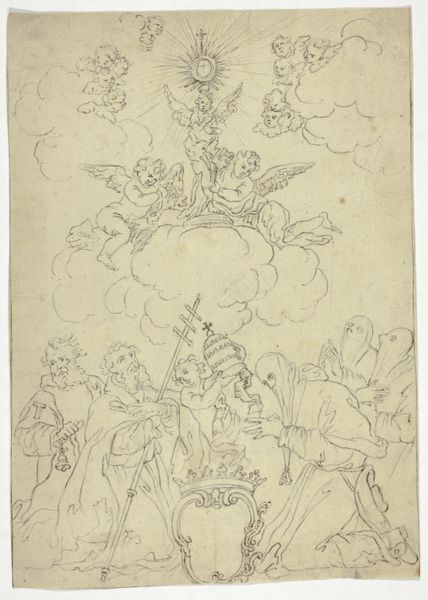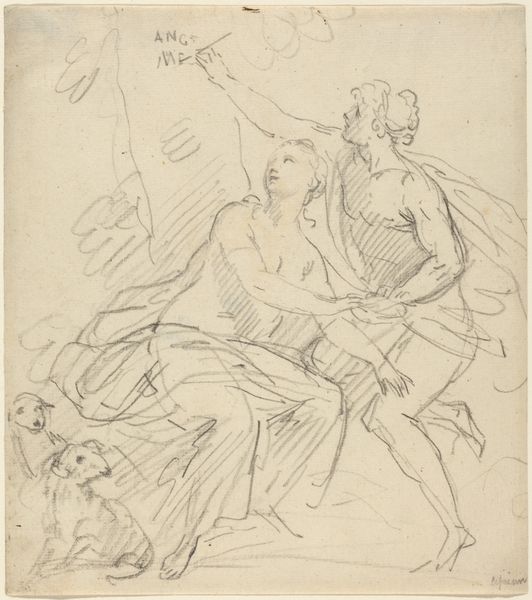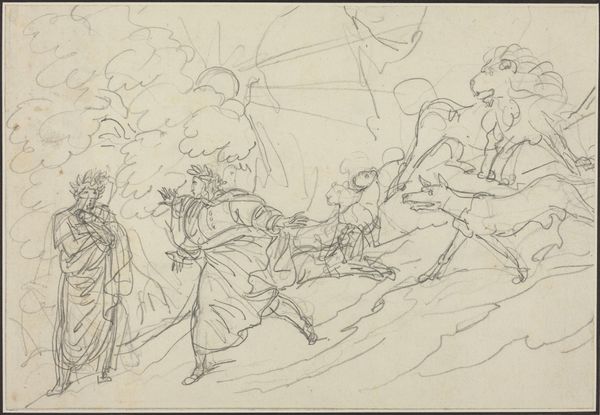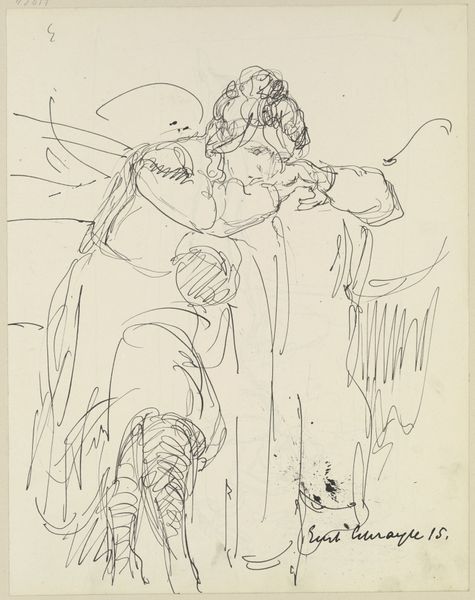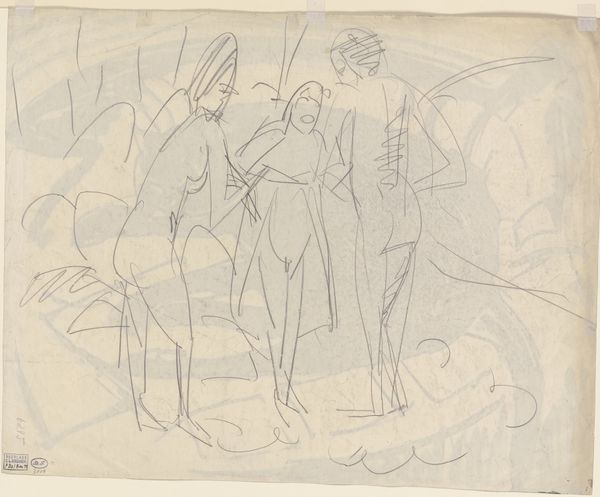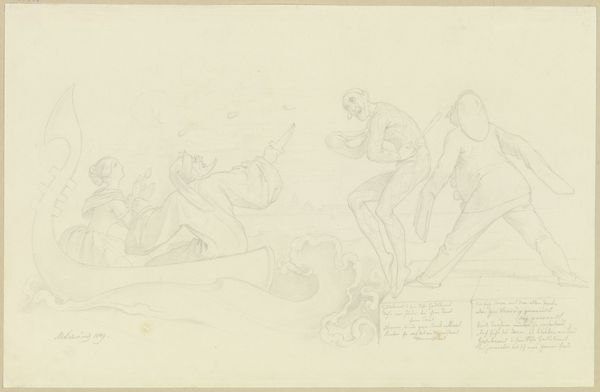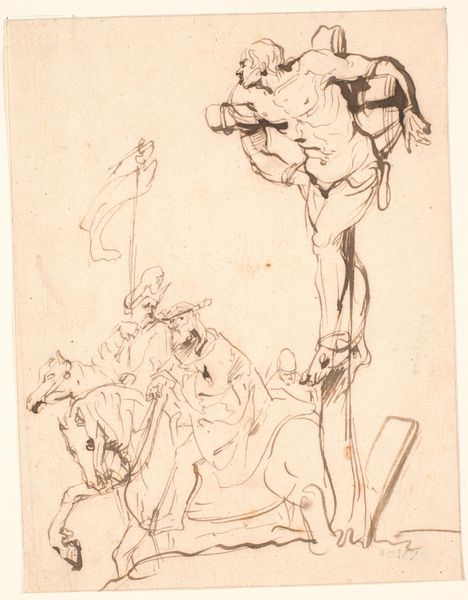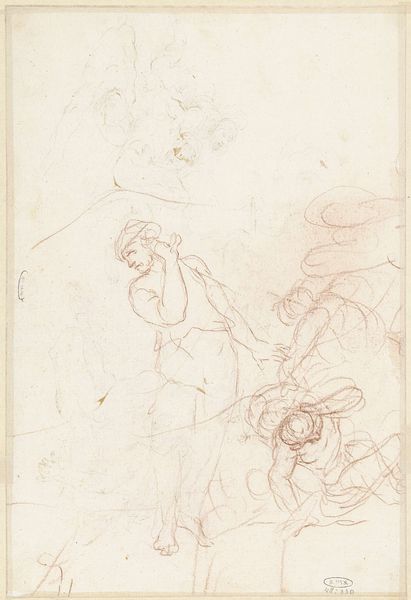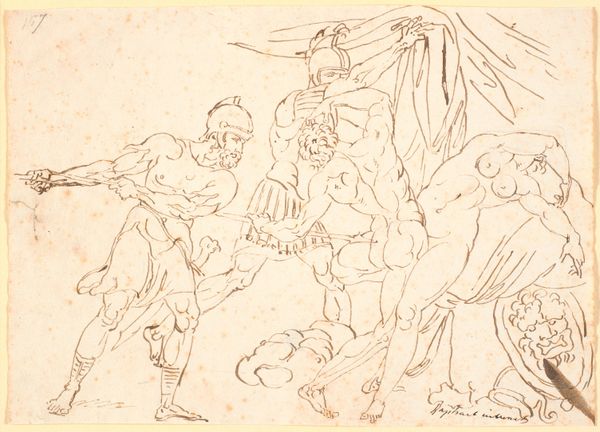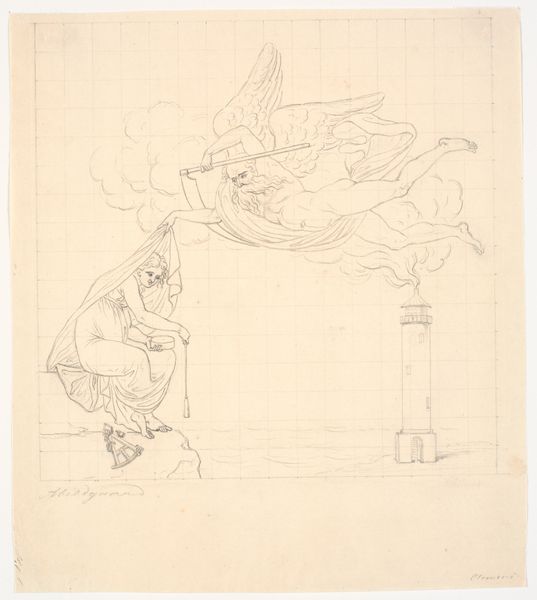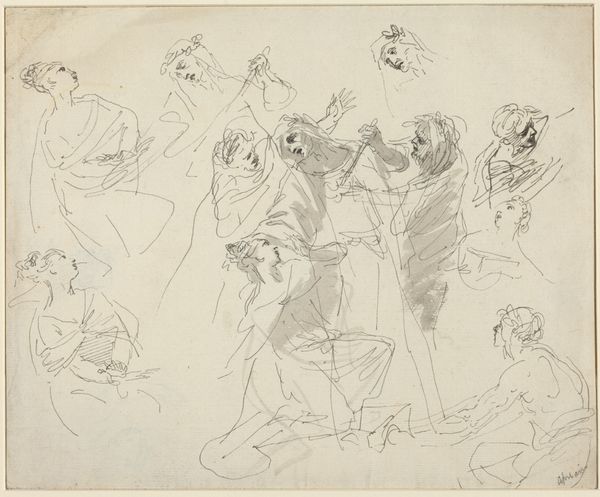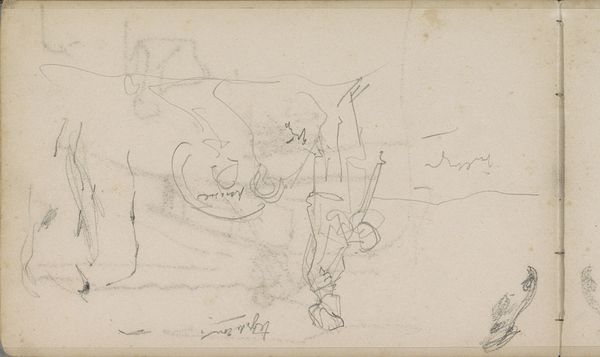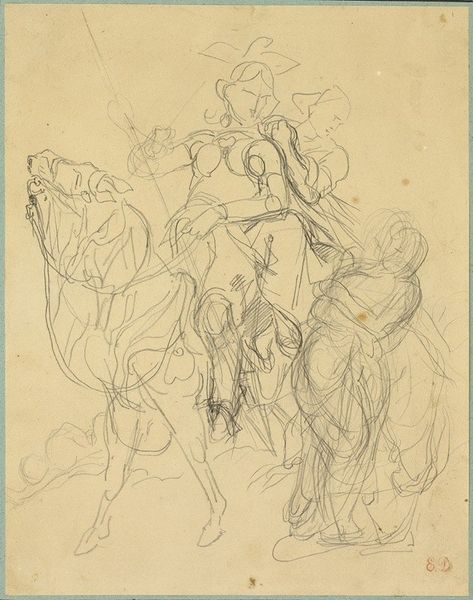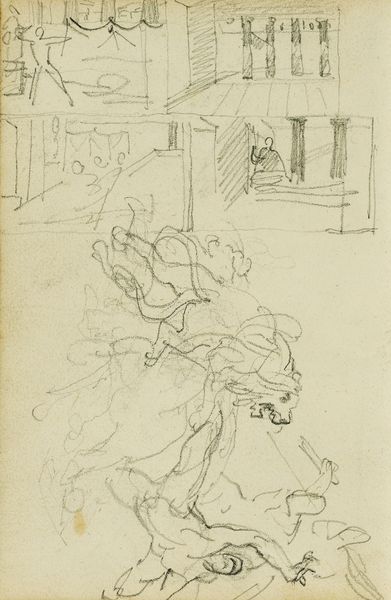
drawing, pencil
#
drawing
#
16_19th-century
#
landscape
#
figuration
#
romanticism
#
pencil
#
sketchbook drawing
#
northern-renaissance
Copyright: Public Domain
Editor: Here we have "The Walk to the Brocken," a pencil drawing by Peter Cornelius from around 1810. It feels unfinished, almost like a fleeting thought captured on paper. What stands out to you in this piece? Curator: What interests me is how the seemingly ethereal, Romantic subject matter – figures encountering apparitions, maybe a will-o'-the-wisp – is achieved through such basic materials. The pencil, a humble instrument, becomes the engine for conjuring the sublime. Consider the labor involved. It's not just artistic inspiration; it's the repetitive act of mark-making. Editor: So you're less focused on the narrative and more on the actual making of the drawing? Curator: Precisely! And consider the social context. Pencils were becoming more widely available, a tool for a burgeoning middle class, not just the wealthy. Is Cornelius engaging with folk tales or exploring newfound artistic tools for capturing imaginative experiences? How does this piece challenge traditional hierarchies? This method could indicate an inclination for craft more than 'fine' art. Editor: I see what you mean. The roughness of the pencil lines and the lack of finish makes it accessible somehow. It's not trying to be precious. The artist wants us to recognize these marks and the means by which they form part of something significant. Curator: Yes! Think about the consumption of art at the time. Was this drawing intended for public display or private contemplation? It prompts questions about the intended audience and how its meaning would shift depending on its context. Editor: That's a great point. I had only thought about the Romantic aspect of the image. This has opened my mind to new perspectives to understanding Cornelius’s artistic choices. Curator: Excellent, viewing a piece for more than its surface story and how its cultural context gives it value is often illuminating!
Comments
No comments
Be the first to comment and join the conversation on the ultimate creative platform.
